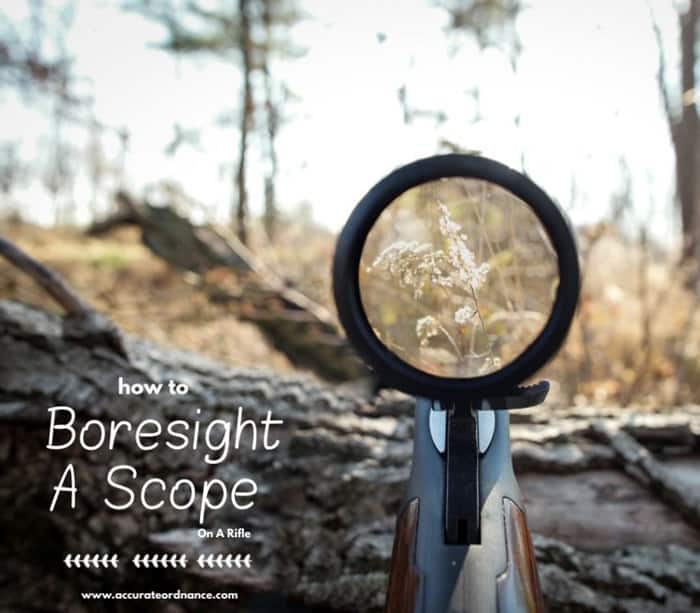
It’s time to move on from your old iron sight to a new and improved rifle scope. Great! Just one thing stands between you and your perfect shot: zeroing.
While using a rifle scope offers a great advantage to any shooter or hunter, sighting the optic is a feat in itself. Especially if you’re new to the scope world, trying to accurately sight your rifle can seem like a daunting and impossible task. Not only that, but the traditional method of sighting your rifle can be a huge cost in ammo because you have to shoot multiple rounds in order to perfect your sight.
Today we’re going to talk about something that can help you avoid all that: bore sighting. Using a laser bore sight can help you reach the best rifle scope zero that you can get without shooting a single round. A laser bore sighter is a great tool to have on hand if you need to be stingy with your ammo in a tricky situation. Once you get the hang of it, the bore sighting process is easy and simple. While it’s not as exact as taking a shot to zero your rifle, laser boresighters will get you pretty dang close to that perfect zero. And the best part? You save time and money. For more information on using a bore sight as a zeroing tool, refer to the related article “How to Sight in a Red Dot Scope Without Shooting.“
Not only that, but a laser boresighter is mainly made to help with zeroing. It’s main purpose is not to replace a proper zero (though it can be done) but to assist in saving time and effort in the sighting process. Before you start shooting off your live ammunition, you can use laser bore sighting on your scope mount in order to get your rifle much closer to its intended zero.
This way, you can save tons of ammo and time. Without laser bore sights, zeroing your rifle could take nearly forever, even at a small distance like 25 yards or the 100 yard mark. The laser beam will easily reduce your sighting time and allow you to become more proficient when you need to sight your rifle in a pinch.
What is a Laser Bore Sight Tool?
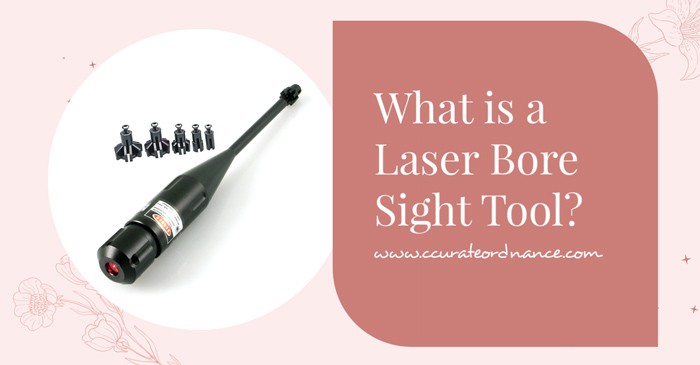
Essentially, a bore sighter is just a laser dot that you attach to your rifle that will help you to get your zero. The bore sight will usually be a laser of some sort that aligns with your barrel to estimate where the bullet is going to land on your target. From there, you can use the projected laser dot to adjust your scope accordingly to what the laser presents. That way, you either have a super quick zero or a helpful jump ahead in the sighting process.
There’s a couple of main types of bore sights that are available on the firearm market today. They are the collimator and a laser boresighter. Both of these methods will provide the same results just with different executions. However, they are the most common methods for bore sighting a rifle that currently exist today. Let’s break down each type and how they work.
How to Bore Sight a Rifle
1. Collimator
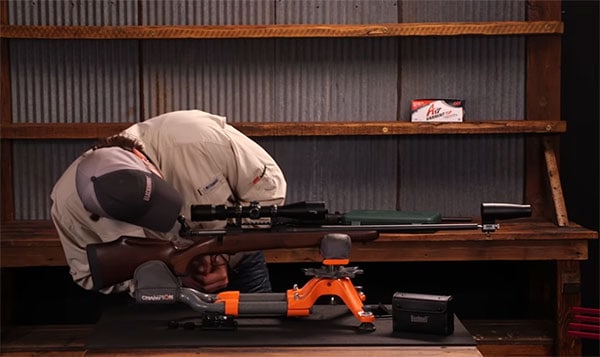
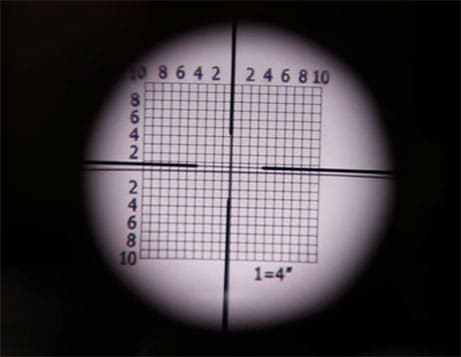
A collimator bore sighter is a tool that goes into the end of your weapon and into the muzzle. Basically, it has a reflective surface that has a couple of lenses on it to replicate a paper target. That way, when you look through your optic you’ll see a displayed target grid of some sort. This method is very simple to use: just use your scope adjustment and use your elevation and windage to align your reticle with the reticle on the “target paper” of the collimator. And just like that, you’ve boresighted your rifle! A rifles bore like this is extremely easy to use and will get you started on the right path to a great zero.
There’s a few things to keep in mind here though. If you find yourself having to adjust your reticle elevation or windage more than 8 inches, that’s usually an indicator of a scope reticle mount issue. Having to adjust that much means that your scope mount is most likely off or not mounted correctly. Before you proceed any further, make sure that your optic is correctly mounted like the product manual intended.
2. Laser Bore Sighter
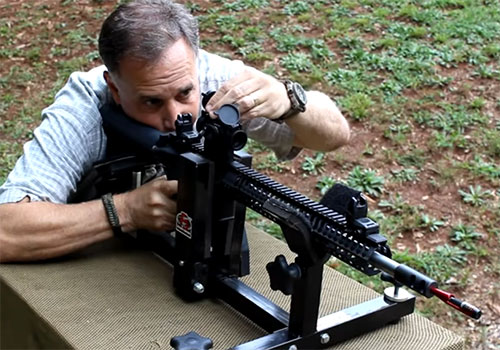
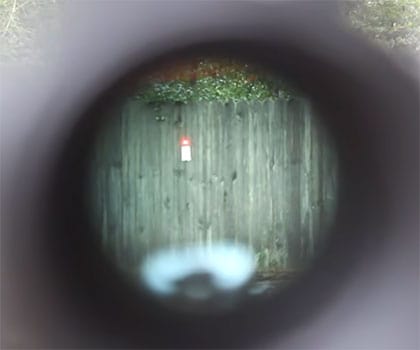
While a little different in results delivery, the laser beam method works mostly the same. Some laser bore sight tools are inserted into the muzzle of the barrel end, while some are chambered in the bolt action rifle chamber like a blank round. Once attached as a rifle bore, the laser will point out where your muzzle is estimated to shoot the bullet onto the target paper.
These lasers are meant to be used at a 25 yards distance (always make sure your weapon is pointed in a safe direction!) target. Once you get your rifle bore set up, look through your optic and locate the laser dot. This is what you will want to adjust your reticle to rather than the projected target like the collimator. Again, just use your scope adjustment to bring the reticle to the correct position. The same rule applies here too: if you have to adjust your reticle over 8 inches, double check your scope mount.
3. Use Your Scope’s Mechanical Center
Now, these next two methods are for those who don’t have ready access to a bore sighter tool. For this method, you’re going to be using the mechanical center of your scope’s reticle adjustment. Just keep in mind that this way is going to be a very rough method of bore sighting, so the results will not be as accurate as the actually bore sighter tools.
To do this, click your windage adjustment all the way to one side. Now, as you turn it all the way back in the opposite direction, make sure you count the number of clicks or increments. Once you’ve done that, you should be able to count back the right amount of turns in order to reach the center.
Now, do the same for the elevation turret. Dial the adjustment all the way to one side, count the turns back, and return the reticle to the newfound center of the elevation adjustment. And there you have it: a rough, but still worthy bore sight.
4. Look Through Your Bore
This final method is the least reliable and roughest method of boresighting out there. For this method, you’ll need to be able to remove the bolt on your rifle. If you don’t know how to do that, do some research and practice before you proceed.
Once you have the bolt removed, you can look through the bore of your rifle. Now, align it with the center of your target paper. Once you’ve done that, preferably using a gun vise, you can look through your scope and align it with the center that you saw through the bore. Because there is no actual adjusting and is just going purely off eyeballing, this method is likely to be inaccurate, but still better than nothing.
References
https://savagearms.com/blog?p=boresighting-your-rifle
https://huntingmark.com/how-to-bore-sight-a-scope/

Mike Hardesty is a published freelance gun writer. He also possesses specialized expertise in rifle scopes With dozens of articles and reviews published in Pew Pew Tactical, Snipercountry.com, and TTAG (The Truth About Guns), Mike is considered a firearms expert. His special area of expertise is handguns.
Mike is a long-time shooter. He has been punching paper targets, taking deer and other game and shooting at competitions since about 1975. Other related pursuits include reloading and bullet casting. He currently reloads for over 10 calibers, both handgun and rifle. His reloads, particularly for 9mm, were in great demand during the height of the ammo shortage among family and friends. He donated hundreds of rounds to informal shooting sessions. He was quoted as saying “I do not sell my reloads but I sure will help my guys shoot ’em for free!”. He has a few cherished firearms that he has inherited or otherwise procured — those are his favorites.
He earned B.S. and M.S. degrees from Indiana State University in 1974-1975.
He’s a firearm experts and is the founder of mhardesty.com.
